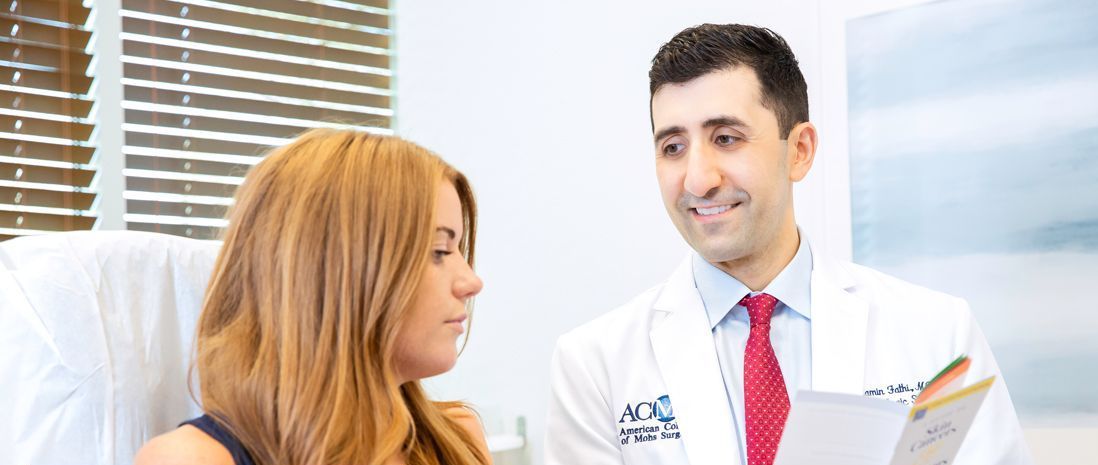Keloid Scar Treatment in Phoenix, AZ
We treat raised, painful, or persistent scars.
Keloid Scar Treatment:
Causes, Symptoms & Expert Removal Options
Keloid scars are raised, thickened areas of skin that form due to an overproduction of scar tissue following skin injury. Unlike normal scars, keloids continue to grow beyond the original wound, often becoming cosmetically and physically bothersome. At Phoenix Surgical Dermatology Group, we specialize in the diagnosis and treatment of keloid scars, using advanced techniques to reduce discomfort and improve skin appearance.
What Are Keloid Scars?
Keloids are overgrown scar formations that result from abnormal wound healing. They develop due to excessive collagen production and can appear weeks—or even up to a year—after injury. Keloids are benign but may become painful, itchy, or cosmetically disfiguring.
Characteristics of Keloids:
- Raised, shiny scar with a flat surface
- Color ranges from red or pink to purple, brown, or dark tan
- Often larger than the original injury
- May feel firm, rubbery, or doughy
- Can itch, burn, or cause discomfort
- Continue to grow over months or years
Most common on the
chest, shoulders, back, neck, face, and earlobes
Keloid vs. Hypertrophic Scars
Both keloid and hypertrophic scars involve excessive scar tissue formation, but key differences include:
Keloid Scar
Grows beyond the wound
Rarely resolves on its own
Often darker than surrounding skin
More likely to recur after removal
Hypertrophic Scar
Stays within wound margins
Often improves over time
Typically red and thick
Less recurrence risk
Proper diagnosis by a board-certified dermatologist is crucial for selecting the right treatment approach.
What Causes Keloid Scars?
Keloid formation is influenced by
genetics, wound tension, and skin type. Individuals inherit their tendency to form keloids. Common triggers include:
Surgical incisions
Acne lesions
Piercings and tattoos
Insect bites
Chickenpox scars
Burns and blisters
Injection or vaccination sites
Cuts or abrasions
Who Is at Risk for Keloids?
Keloids can affect anyone, but certain groups are more susceptible:
- Ages 10 to 30
- Individuals with
darker skin tones (7x more likely)
- Those with a
family history of keloids
- People undergoing
puberty or pregnancy
- Individuals with
piercings, tattoos, or frequent skin injuries
How Are Keloid Scars Diagnosed?
Keloids are typically diagnosed during a physical examination based on:
- Appearance
- Location
- Growth pattern
- History of trauma or skin injury
In some cases, a
biopsy may be performed to rule out other skin conditions.
Treatment Options for Keloid Scars
Although keloids are permanent, various treatments can shrink, flatten, and improve their appearance. Treatment is personalized based on size, location, and severity.
Non-Surgical Treatments:
- Corticosteroid Injections
- Reduce inflammation and flatten the scar
- Often given in a series over weeks
- Cryotherapy
- Freezing technique best for small keloids
- Can reduce size and improve appearance
- Laser Therapy
- Improves color and texture
- Can be used alongside other treatments
- Silicone Sheets or Gels
- Applied daily to reduce scar thickness and discomfort
- Pressure Therapy
- Applied after surgery to minimize recurrence
Surgical Options:
- Excision (Scar Removal Surgery)
- Performed under local anesthesia
- Often combined with steroid injections or radiation to prevent recurrence
- Radiation Therapy
- Used after surgical excision
- Helps prevent the keloid from growing back
Note: Surgery alone is not always recommended, as it may trigger formation of a new keloid. A
multimodal treatment plan yields the best results.
Frequently Asked Questions About Keloid Scars
Can keloid scars be completely removed?
Keloids can be surgically removed, but they have a high recurrence rate. Combining surgery with steroid injections, silicone therapy, or radiation can significantly reduce the risk.
Are keloids dangerous?
Keloids are not cancerous, but they can be physically uncomfortable and emotionally distressing due to their appearance.
How long does it take for a keloid to form?
Keloids may appear months to a year after the initial skin injury and can continue to grow slowly over time.
Can I prevent keloid formation?
If you are prone to keloids, avoid unnecessary skin trauma like piercings and tattoos. After surgeries or injuries, applying silicone sheets and minimizing tension on wounds can help reduce risk.
Is treatment painful?
Most treatments, like steroid injections and laser therapy, are minimally uncomfortable. Local anesthesia is used for surgical removal.
Get Expert Care for Keloid Scars in Phoenix, AZ
Living with keloids can be frustrating and affect your confidence. At Phoenix Surgical Dermatology Group, we offer compassionate care and customized treatment plans to reduce keloid scarring and restore comfort and appearance.
Schedule your consultation today to explore effective options for managing and treating keloid scars with the help of board-certified dermatologists.





